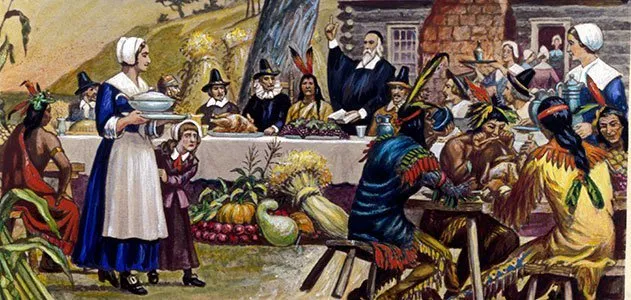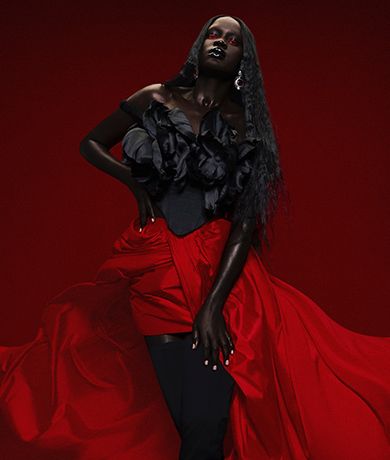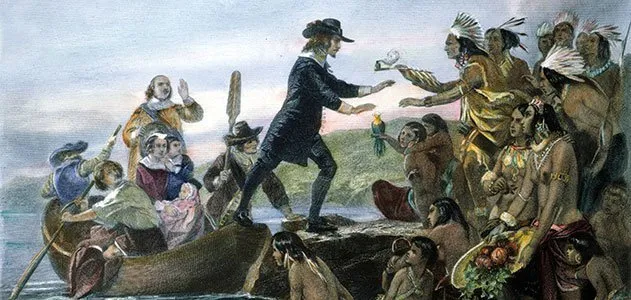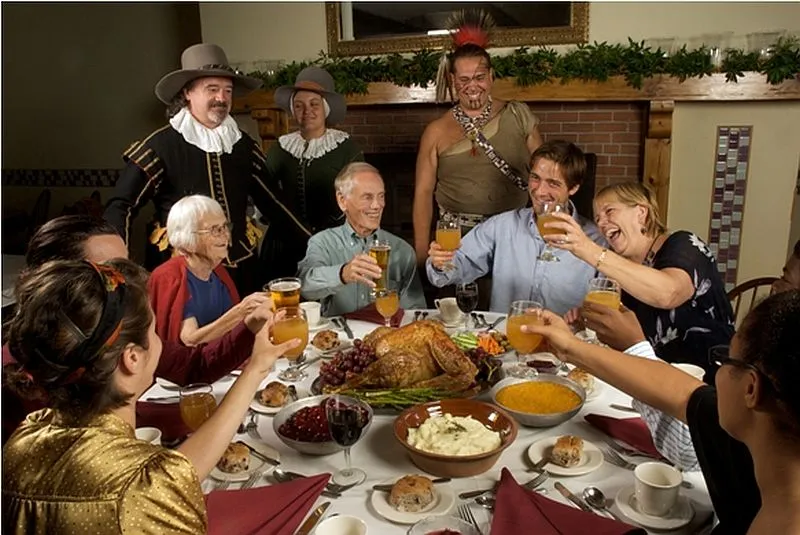Publication date November 25, 2021
Thanksgiving Tale: Learn the truth, unlearn the lie, bust the myths
Didn’t pay attention to your history lessons? If you would have, you’d have noticed that there are a bunch of flaws and loopholes in the traditional Thanksgiving tale. Just like all enjoyable things, Thanksgiving is not as rosy as it seems.
Americans are taught only one version of Thanksgiving history – the Pilgrims sat down with Native Americans for a good ol’ feast and thanked them for their contribution to a successful harvest. Did anyone in this story give a second’s thought to Native Americans and the consequences of Pilgrims settlements? So, what really happened in Plymouth 400 years ago? Let’s time travel and find out.
Recommended articles
What’s the real story behind Thanksgiving?
The real origin of the Thanksgiving story is quite unclear, and there are conflicting versions across – we have put two and two together by piecing the most researched and reported story.
So the Mayflower did indeed carry settlers to a land that was later colonized and named the infamous Plymouth, MA. There was indeed a three-day feast held in 1621 hosted by the settlers and had the Natives, members of the Wampanoag tribe in specific, in attendance. But that was not what the settlers referred to as “Thanksgiving”. Contradictory to the main observation of the feast, the settlers actually fasted when they celebrated during their version of “Thanksgiving”. So, the meal being hailed as a Thanksgiving element is up for debate.
Coming back to the feast the Pilgrims and Natives did have, there are records of Turkey or some type of poultry being served, but there was no pie or mashed potatoes per se. They probably had seafood, also a local dish called nasaump – porridge made of cornmeal which was later adopted by the Pilgrims.
It gets interesting from here
When Thanksgiving is in the talks, the stories and recollections are always centered around the Pilgrims, and not much from the perspective of Native Americans who were the occupants for centuries. When Europeans started popping by what is now called the United States, they apparently carried diseases that led to the demise of many Native Americans at a rapid rate. This paved the path for the later settlers to take control of the land and establish their settlements without much opposition. It’s also said the settlers had all intentions of selling and kidnapping the Native Americans for slavery.
Also, the biggest myth is probably that the Pilgrims invited Native Americans to their feast. It turns out that the tribe leader Ousamequin extended a goodwill gesture to the settlers as part of a mutual-defense pact. The Native Americans heard gunshots that were in celebration and confused it for the start of combat. Once they figured out what it actually was, they then decided to join that celebration and stay for three days. It still sounds happy, warm, and fuzzy right? Nope, things took a wrong turn very soon.
Pilgrims started celebrating Thanksgiving annually by fasting and praying – and this often occurred after the massacres of Native People. In 1637, Massachusetts Colony Governor John Winthrop announced a celebration again referred to as Thanksgiving after his volunteers managed to execute 700 Pequot people.
Up until 1863, Thanksgiving was celebrated on various dates, depending on the massacres. The then President Abraham Lincoln declared the last Thursday of November to be the official day of Thanksgiving, eliminating any other driving forces to the feast.
What about modern-day Thanksgiving?
Diseases and massacres were not the ends of the suffering of Indigenous people. So, one can understand how rubbing Thanksgiving in their faces can hurt the sentiments of Natives whose ancestors suffered great losses at the hands of the settlers in the name of Thanksgiving. To top it off, some non-Natives also adorn headdresses to honor the day, which is not just culturally inappropriate but also a mockery of their traditional dress.
Some tribes even observe the day as “a day of mourning” as this is also the day of settlers who occupied their land starting centuries-long violence and atrocities. The United American Indians of New England are of the opinion that Thanksgiving, to the, is a gore reminder of the genocide, theft, and assault on the Native people and culture. So for the next 48 years, the Native Hope has marked this day as a day of mourning. They said, participants of the National Day of Mourning honor the struggles of Native Americans, and remember the oppression that Natives continue to experience.
How can we support Native Americans this Holiday Season?
No matter how you personally feel about the holiday, it’s to each their own, but you cannot deny the oppression Native Americans face. So we can always choose to uplift the causes close to them. Educate yourself about holidays like Indigenous People Day, and issues around healthcare, the safety of women, and land disparities… raise your voice if you see any injustice in the name of the race. A much simpler approach to start supporting them is to educate people around you to keep offensive Native American stereotypes at bay, it could be in school events, holiday decorations, or sports.
Also, while you are prepping for your Thanksgiving meal, buy from the local Native American vendors or make a small donation to a local Native organization.
We don’t mean to kill the festive vibe you’ve got going, but let’s celebrate responsibly and while being in the know. Everything said and done, do let us know what you think of the Thanksgiving history down in the comments below.







